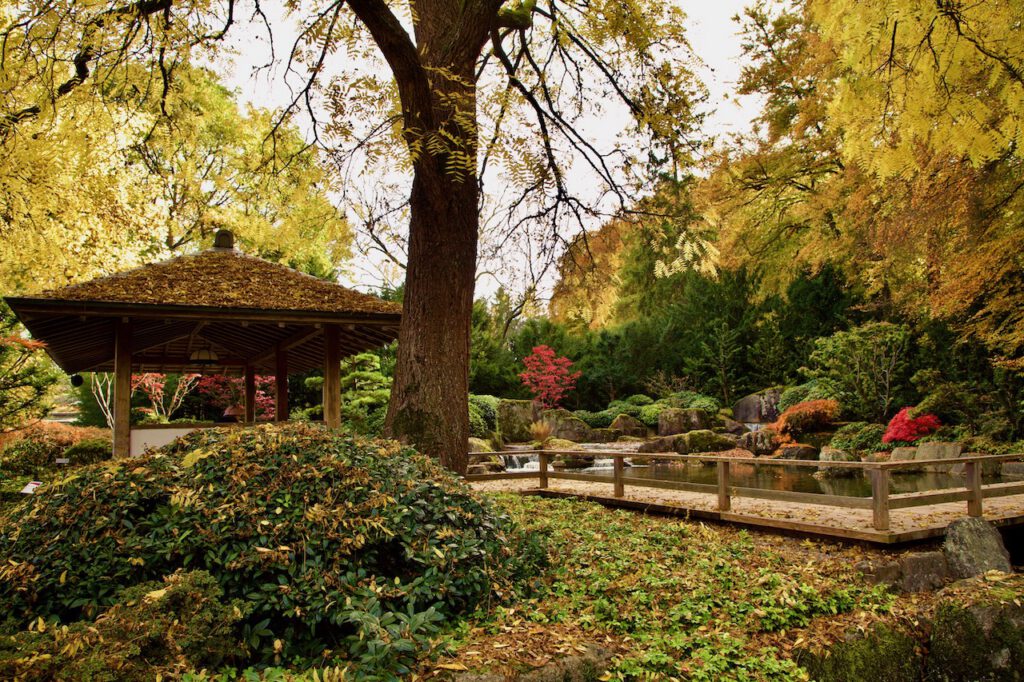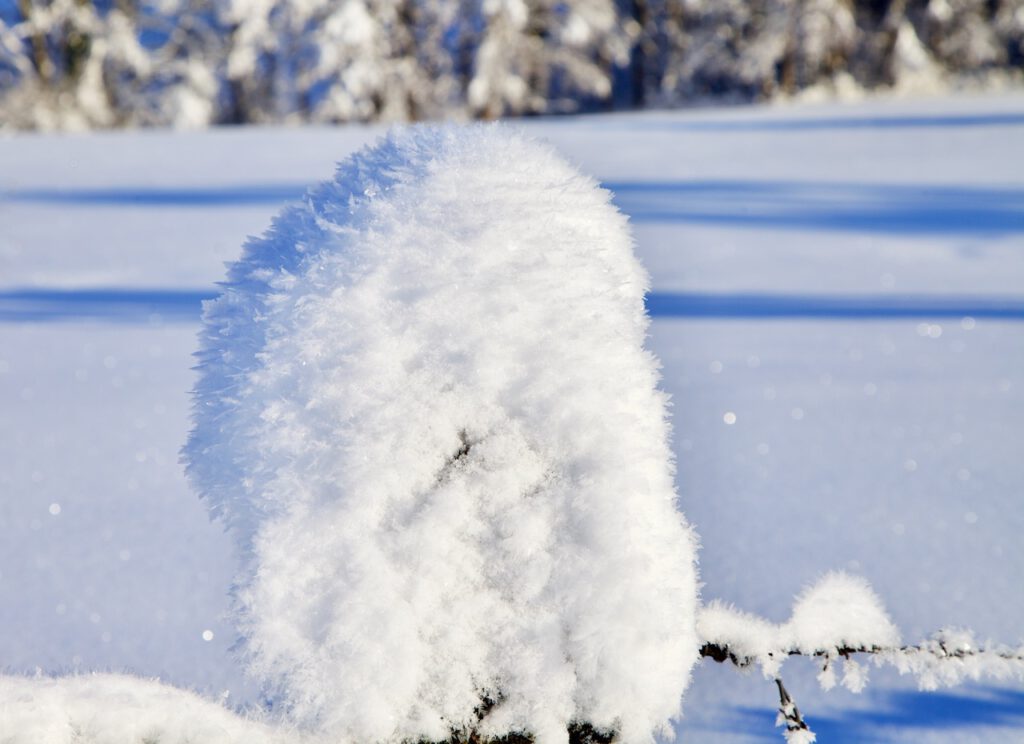Der Japanische Garten in Augsburg (Bayern)
Der Japanische Garten in Augsburg ist zu jeder Jahreszeit ein Traum! Vor allem im Herbst präsentiert er ein unvergleichliches Feuerwerk gelber und roter Farbtöne. Ihr müsst nicht nach Japan reisen, um die Faszination eines klassischen japanischen Gartens und der vielen Motive, die er bietet, zu erleben.

In Augsburg, einer Großstadt im Südwesten Bayerns, befindet sich unweit des Stadtzentrums einer der beeindruckendsten und repräsentativsten Japanischen Gärten Europas. Der japanische Landschaftsarchitekt Yoshikuni Araki entwarf diesen „Garten der Freundschaft“. Er schuf eine Anlage, in der Bäume, Pflanzen, Sträucher und Wasserelemente sich zu einem einzigartigen Gartenkunstwerk zusammenfügen und den Besuchern ein außergewöhnliches Naturerlebnis bieten.
Wasser ist ein elementarer Bestandteil des Japanischen Gartens. Die Gartenarchitekten machten sich Augsburgs besondere Landschaft zunutze, in der Wasser ebenfalls eine zentrale Rolle spielt. Zwei Flüsse, Wertach und Lech, sowie eine große Anzahl von Kanälen in der Stadt und um sie herum unterstützten Augsburg einst bei seinem Aufstieg zu einem bedeutenden Industriezentrum. Das Wassermanagement-System der bayerisch-schwäbischen Metropole ist ein technisches Meisterwerk und gehört heute zum UNESCO WELTKULTURERBE.
Einer der vielen Augsburger Wasserläufe fließt direkt durch den Botanischen Garten, zu dem der Japanische Garten als integraler Bestandteil gehört. Das Wasser eines Baches aus dem angrenzenden Siebentischwald stürzt hier über Granitbrocken herab, um auf der nördlichen Seite des Japanischen Gartens unter einer Brücke zu verschwinden.
1985 wurde der Japanische Garten als Geschenk zum 2000-jährigen Jubiläum der Stadt geschaffen. Er steht auch für die freundschaftlichen Beziehungen zu den Partnerstädten Amagasaki und Nagahama; eine Freundschaft, die von Magokichi Yamaoka, dem Präsidenten des Maschinenbauunternehmens Yanmar, begründet wurde. Yamaoka war ein großer Verehrer Rudolf Diesels, dessen Familie aus Augsburg stammte, und stiftete ihm einen Zen-Garten im Wittelsbacher Park in Augsburg.

Der Japanische Garten im Botanischen Garten Augsburg präsentiert japanische Gartenkunst in Vollendung. Inspiriert wurde sein Architekt Araki durch die großen Gartenvorbilder in Kyoto. Japanische Gärten sind Kunstwerke, die eine Landschaft en miniature spiegeln und eine spirituelle Qualität besitzen. Der Garten hat zwei Eingänge, und man kann je nach Ausgangsort stundenlang neue Blickwinkel und Perspektiven entdecken. Unregelmäßig geschwungene Pfade, ein charakteristisches Element, führen zu den interessantesten Punkten. An markanten Standorten sind typisch japanische Steinlaternen (Ishidoro) platziert. Im Zentrum des Gartens befindet sich ein Teich (Euchi), der das Meer symbolisiert. Zwei Pavillons (Azumaya) stehen an diesem Teich; der größere von ihnen erinnert an einen Tempel und ist ein idealer Ort zum kontemplativen Verweilen. Von hier aus eröffnet sich ein freier Blick auf den schon erwähnten Wasserfall, dessen Granitfelsen übrigens aus dem Fichtelgebirge im Norden Bayerns hierher transportiert wurden.

Der Wasserfall und die Felsen erzeugen den Eindruck einer Gebirgslandschaft.

Ein magischer Ort: Felsen mit Flechten und Moos, ein dichtes Blätterdach und Wasser, das über den Granit herabstürzt.

Bäume und Stauden spielen eine wichtige Rolle im Japanischen Garten. Neben den charakteristischen Kirschbäumen gibt es weitere typisch japanische Pflanzen wie Azaleen und Rhododendren. Aufgrund der anderen Klimazone ist zwar keine ausschließlich japanische Bepflanzung möglich; man hat aber bei der Pflanzenauswahl Kompromisse gefunden, die den authentischen Eindruck eines Japangartens nicht beeinträchtigen.

Der Japanische Garten ist das ganze Jahr über ein ansprechender Ort. Zu den Höhepunkten im Jahreslauf gehören das Kirschblütenfest im Frühjahr und natürlich die faszinierenden Farben im Herbst. Grün, Gelb und ein intensives Rot sind dann dominierend. Für Fotografen bieten sich hier außergewöhnliche Motive und Möglichkeiten, auch wenn am Wochenende viele Besucher den Garten bevölkern. Ein guter Zeitpunkt zum Fotografieren ist sicherlich unmittelbar nach der Öffnung des Gartens um 9 Uhr morgens.

Weitere Informationen unter: www.augsburg.de/botanischergarten
Der Japanische Garten im Botanischen Garten ist leicht zugänglich. Einen (geringen) Eintrittspreis bezahlen muss man nur am Haupteingang des Botanischen Gartens und kann dann alle zugehörigen Gärten (z. B. auch Römergarten, Apothekergarten usw.) besuchen. Vor der Anlage befindet sich ein großer Parkplatz. Vom Hauptbahnhof Augsburg erreicht man den Botanischen Garten mit der Buslinie 32, die fast direkt vor dem Eingang hält. Der Botanische Garten grenzt an einer Seite an den Augsburger Siebentischwald, einen großen Landschaftspark und Wald, der zu weiteren lohnenden Ausflügen einlädt.
© Deutsche Übersetzung: Susanne Niemuth-Engelmann / Redaktionsbüro Niemuth, https://redaktionsbuero-niemuth.de/ / 23.01.24











